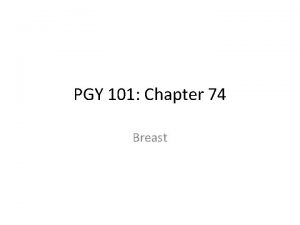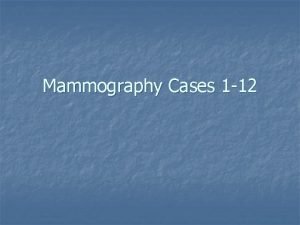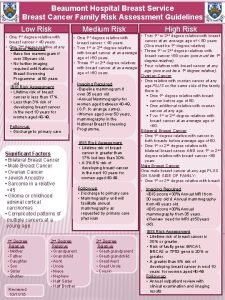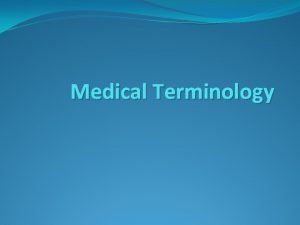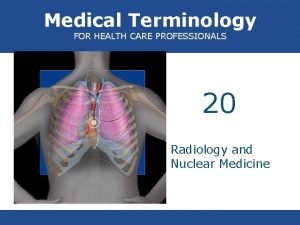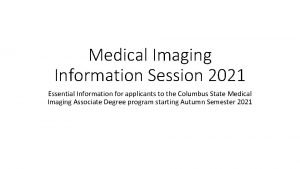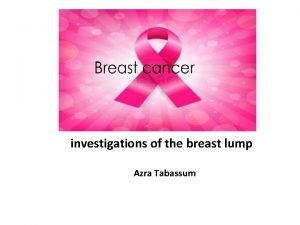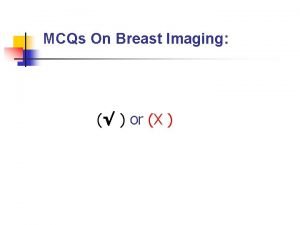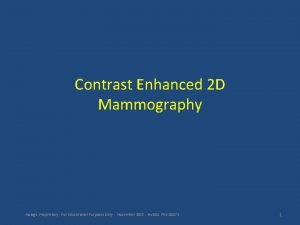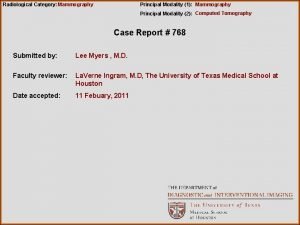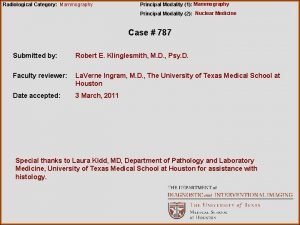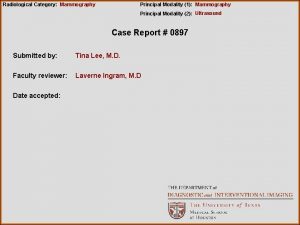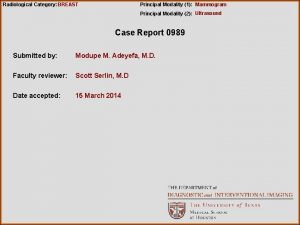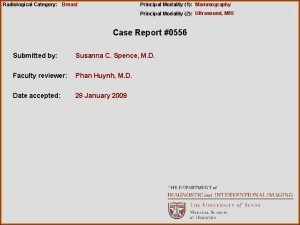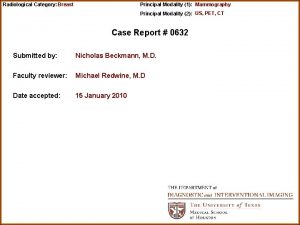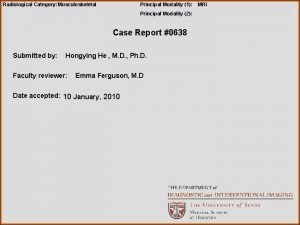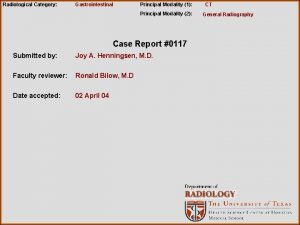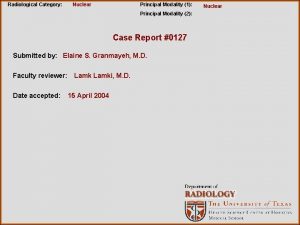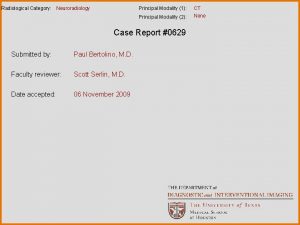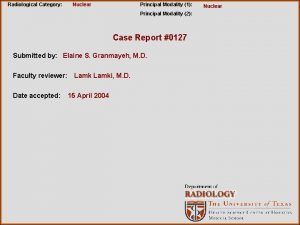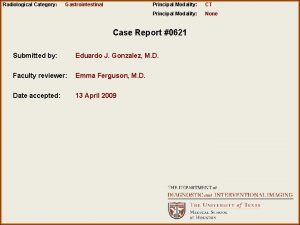Radiological Category Mammography Principal Modality 1 Mammogram Principal















- Slides: 15

Radiological Category: Mammography Principal Modality (1): Mammogram Principal Modality (2): Ultrasound Case Report # 780 Submitted by: Beau Black, M. D. Faculty reviewer: Laverne Ingram, M. D. , The University of Texas Medical School at Houston Date accepted: 15 March, 2011

Case History 60 year old with a history of a non-healing right lateral breast skin lesion and underlying mass. Patient had undergone extensive antibiotic treatment without resolution of the lesion.

Radiological Presentations MLO

Radiological Presentations XCCL

Radiological Presentations

Radiological Presentations

Test Your Diagnosis Which one of the following is your choice for the appropriate diagnosis? After your selection, go to next page. • Primary breast cancer • Metastatic tumor to the breast • Mastitis and/or abscess • Postbiopsy scar, fat necrosis, radial scar • Cutaneous lymphoma • Dermatitis with superimposed infection

Findings and Differentials Findings: Mammography showed a 21 mm x 25 mm round spiculated mass in the right axillary tail on the mediolateral oblique and exaggerated craniocaudal views. This was considered indeterminate and thought worrisome for carcinoma. Ultrasound was recommended. ACR BI-RADS category 0. Ultrasonography showed an irregular, hypoechoic spiculated mass with internal vascularity. Highly suspicious for breast carcinoma. ACR BI-RADS category 4. Biopsy was recommended. Physical exam demonstrated an erythematous and indurated area in the right lateral breast. There was a small area of skin breakdown in the central area of the lesion. No aspirate could be obtained from the underlying breast mass and multiple core biopsies were obtained.

Findings and Differentials: • Primary breast cancer • Metastatic tumor to the breast • Mastitis and/or abscess • Postbiopsy scar, fat necrosis, radial scar • Cutaneous lymphoma • Dermatitis with superimposed infection

Discussion Invasive ductal carcinoma is the most common breast cancer and accounts for 90% of all breast cancers. The classic appearance is a dense irregular or spiculated mass. It may contain pleomorphic calcifications. Invasive lobular carcinoma represents 10% of all breast cancers. It is a very difficult tumor to see on mammography. When visualized it appears as an equal or high density mass with or without spiculations. Inflammatory breast cancer presents with breast edema as well as occasionally a breast mass. It can be mistaken for mastitis. Post-biopsy scar can appear as a spiculated mass. Fat necrosis may appear as a spiculated mass, though typically it is round a fatty center is present. Radial scar is a benign proliferative breast lesion that can appear as a spiculated mass.

Discussion Metastasis to the chest are common from breast cancer, lung cancer and malignant melanoma. Mastitis with underlying abscess formation, dermatitis with superimposed infection and cutaneous lymphoma were considered less likely possibilities given the patient’s history, age and presentation.

Histology

Histology

Diagnosis Invasive ductal carcinoma.

References 1. Ikeda, DM. Breast imaging: The Requisites 2 nd ed. St. Louis, Missouri: Elsevier Mosby, 2011, 95 -145, 175 -179, 390 -392. 2. http: //emedicine. medscape. com/article/1101058 -overview 3. Histology images courtesy of the UT Medical School at Houston Department of Pathology.
 Pa erate
Pa erate National radiological emergency preparedness conference
National radiological emergency preparedness conference Radiological dispersal device
Radiological dispersal device Tennessee division of radiological health
Tennessee division of radiological health Center for devices and radiological health
Center for devices and radiological health Bryant et al
Bryant et al White spots on mammogram images
White spots on mammogram images Phyllodes tumor mammogram
Phyllodes tumor mammogram Beaumont mammogram
Beaumont mammogram Medical terminology
Medical terminology Medical terminology radiology
Medical terminology radiology Ohiohealth berger hospital mammography circleville
Ohiohealth berger hospital mammography circleville Breast exam
Breast exam Components of mammography machine
Components of mammography machine Breast anatomy mcqs
Breast anatomy mcqs Hologic contrast enhanced mammography
Hologic contrast enhanced mammography





